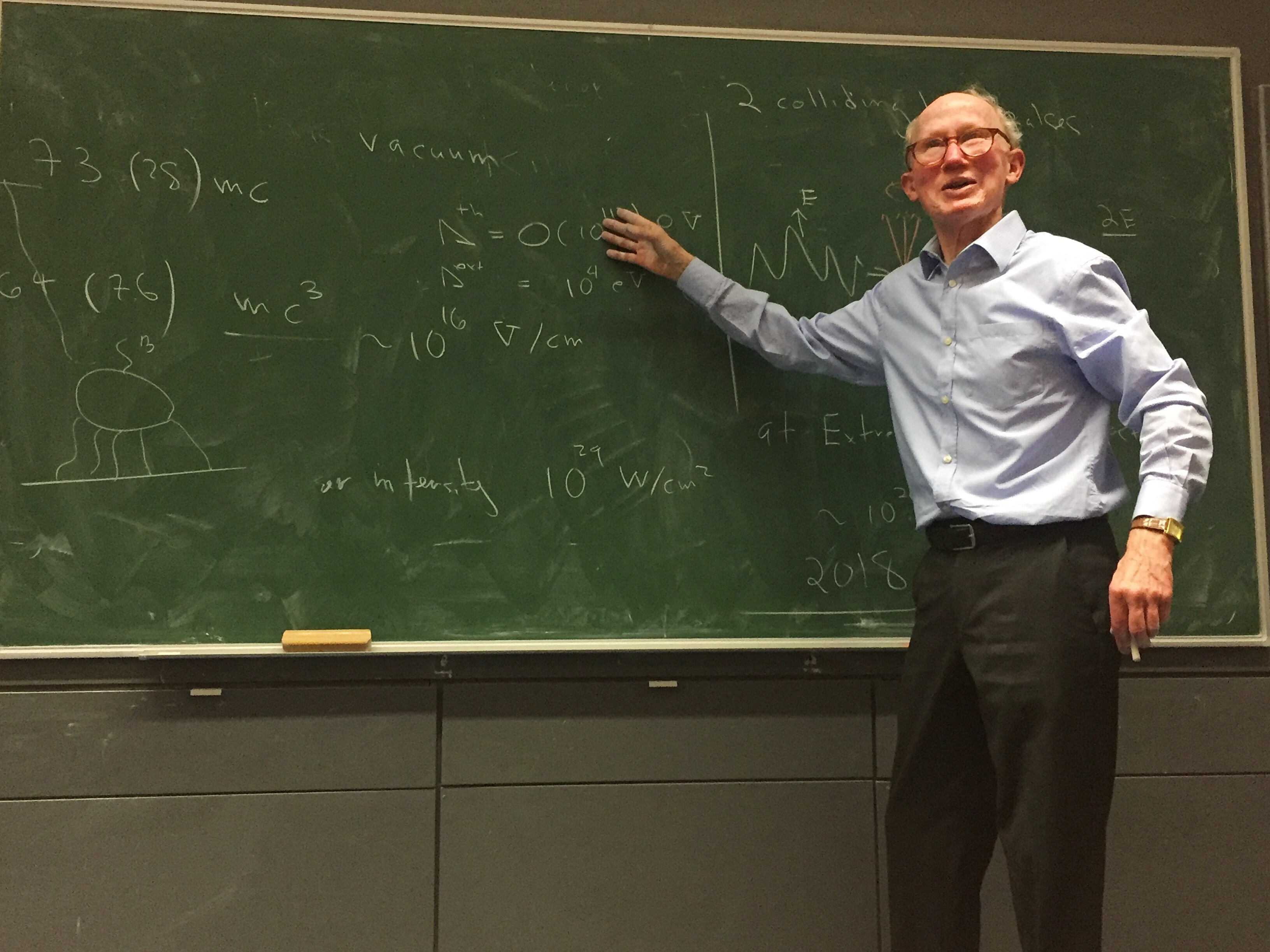Last night I tagged along to DU Physoc’s ‘Quantum Vacuum’ talk, delivered by Professor Emeritus Michael Fry of Trinity’s School of Maths. As well as being a lecturer, Professor Fry is an active researcher and a reviewer for Physical Review. He was there to discuss how our current idea of a vacuum simply isn’t true: “What we call the vacuum is not really a vacuum at all. It is a lively place driven by fluctuating quantum fields. These fields are the origin of mass, cause spontaneous decay of atomic and nuclear states and, presumably, drive the expansion of the universe.”
As an Arts student, going to listen to a Physics expert discuss the vacuum and related science topics was both daunting and intimidating. My academic life as an English Studies student consists of novels, poetry and artistic interpretation, rather than numbers, formulas and theorems. Although I studied Physics at Higher Level for the Leaving Cert (and came away with a somewhat respectable C2), this was not of much help to me last night. I made my first mistake early on, assuming that the venue of the Synge theatre was in the Arts block, though I quickly realised it was in fact the Hamilton. As I waited for the talk to begin, I couldn’t shake the distinct feeling that I was the odd one out, an Arts sheep amongst wolves of Science.
I managed to follow the lecture for approximately five minutes. Professor Fry asked us to imagine a vacuum as an active space, and then talked about how quantum fields have a direct effect on the vacuum. However, this is where my understanding began to decay, in a manner comparable atoms in a nuclear reactor. Symbols appeared sporadically across the blackboard, and a strange diagram of a time and space axis dominated the talk for a few minutes. I understood some of the terms being mentioned, such as “frequency”, “wavelength” and “vector”, but had no idea of the context in which they were being discussed. I also failed to understand most of Professor Fry’s physics-related jokes, though I did enjoy his reference to Planck’s constant as a seven-digit phone number when written in scientific notation.
At one point he said he was going to discuss the “Quantum Maxwell Field”, a concept familiar to most physicists it seemed, but certainly not to this Trinity Life writer. Later, he mentions a “complex number”, which I find somewhat amusing since at this point in my academic life; most, if not all numbers, are reasonably complex. I appreciated the brief appearance of Einstein’s famous E = mc 2 formula, albeit it in a rearranged form. I understood brief snippets towards the end about electrons, photons and positrons, having studied some particle physics in school, but it wasn’t enough for me to understand the 45 minutes of symbols and diagrams. I watched Professor Fry write down the conclusion in plain words on the blackboard, but was still none the wiser.
This was certainly an interesting experience for me, and possibly one of the strangest things I’ve done so far in College. I gathered from the enthusiasm and engagement of the DU Physoc members that this was an intriguing and enlightening lecture from Professor Fry, and I personally think it’s fantastic that they hold these events for students who want an even greater knowledge of their field (or in this case, quantum fields). However, I wouldn’t recommend attending Physics lectures if you don’t have a working understanding of the maths and theory involved. You’ll more than likely end up exasperated, lost and confused.







